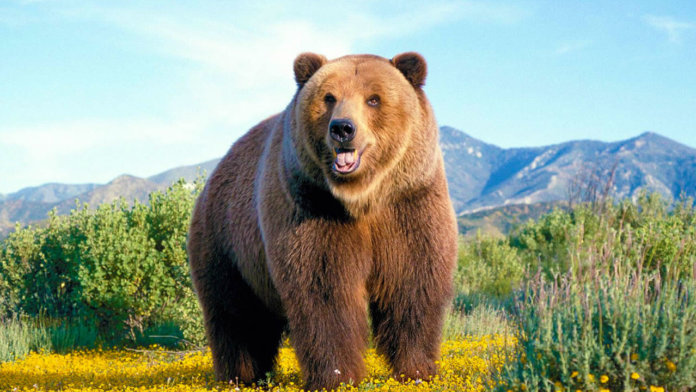Here are the 10 largest bears in the world by size and weight. The largest bear breeds around the world.
10. Sloth Bear
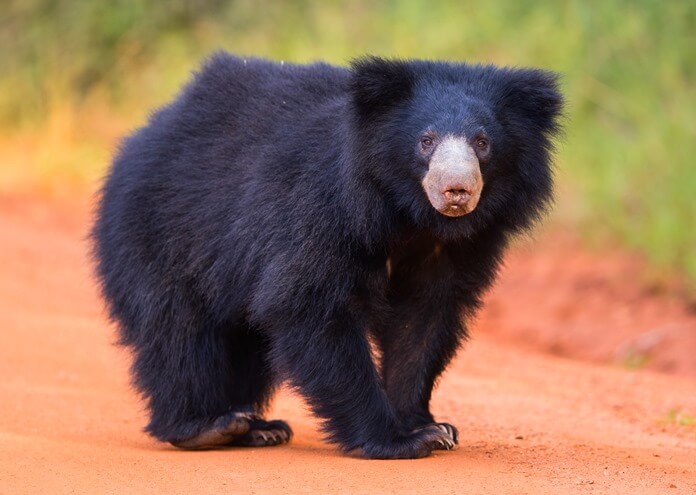 Weight - up to 140 kg, body length - up to 180 cm.
Weight - up to 140 kg, body length - up to 180 cm.
Despite its small size, compared to other largest bears in the world, sloth bears can be very dangerous.
It was such a beast that terrorized the vicinity of Bangalore for a long time, killing and maiming people. He entered the number the scariest man-eating animals in history.
9. Spectacled bear
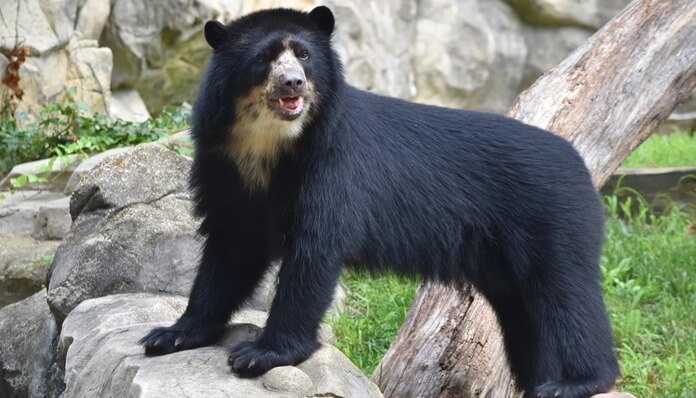 Weight - up to 140 kg, length - up to 2 meters.
Weight - up to 140 kg, length - up to 2 meters.
This "intelligent bear" got its name from the fact that the rings around the eyes look like glasses.
Although this animal is considered a carnivore, meat makes up about 5 percent of its diet. The rest falls on herbal shoots, rhizomes and fruits. Spectacled bears also love to eat termites and ants. Fortunately, their long tongue easily penetrates into the ant dwelling.
8. Giant panda
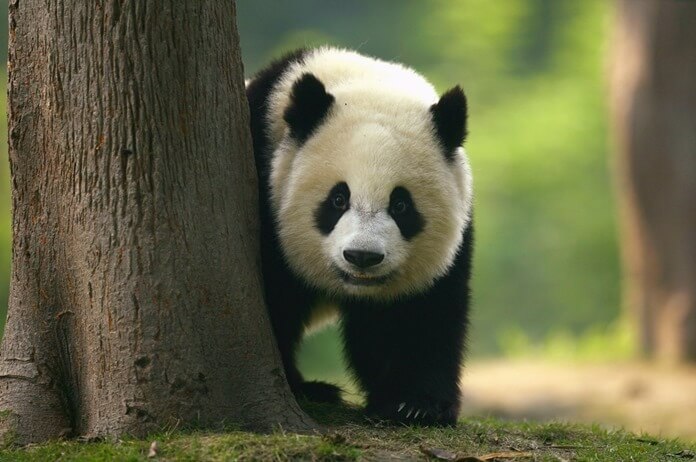 Weight - up to 160 kg, length - up to 1.8 meters.
Weight - up to 160 kg, length - up to 1.8 meters.
One of the cutest animals in the world also belongs to the bear family. But unlike other bears, the panda prefers a vegetarian menu, 99% of which is bamboo. However, on occasion, the panda will not disdain a small animal, bird's egg or insects.
For a long time, scientists have argued about which family to rank the panda in - a bear or a raccoon. However, in the late 19th century, the bearish supporters won. They studied the panda's skin and decided that this cute black and white chubby was almost the ancestor of today's bears. And genetic tests have confirmed that the panda is not a giant raccoon at all, but a real bear, the closest relative of the spectacled bear.
7. Himalayan bear
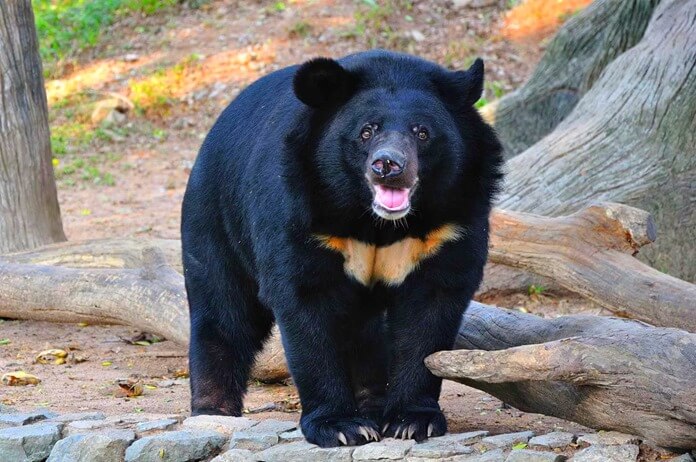 Weight - up to 200 kg, length - up to 1.7 meters.
Weight - up to 200 kg, length - up to 1.7 meters.
This is one of the most beautiful bears, with luxurious shiny black fur and a white or golden shirt front. In shape, it looks like a crescent, because of this Himalayan bear is also called "lunar".
When meeting a person, the Himalayan bear behaves very aggressively. However, people are also the most terrible threat to them. The fact is that in many Asian countries, the bile of the Himalayan bear is used as a remedy for impotence and many other diseases. Therefore, dozens of animals are kept in cramped cages and bile is pumped out of their gallbladders using special tubes. This procedure is extremely painful, and, one might say, a knacker.
6. Kermode bear
 Weight - up to 300 kg, length - up to 1.8 meters.
Weight - up to 300 kg, length - up to 1.8 meters.
This big guy lives only in the forests of western Canada. Although it is a subspecies of the black bear, the kermode skin color is either off-white or cream with an amber tint. This camouflage coloring helps the animal when fishing for salmon on the river.
This bear got its name in honor of the explorer Francis Kermode, who described it. And local Indians call him "ghost bear".
5. Black bear
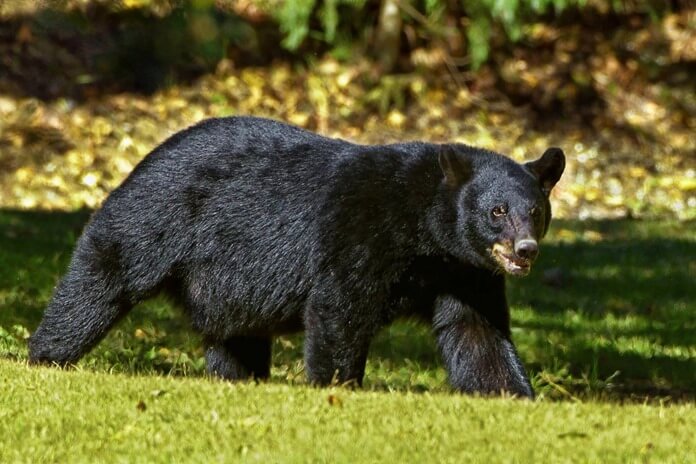 Weight - up to 380 kg, length - up to 2 meters.
Weight - up to 380 kg, length - up to 2 meters.
The diet of the baribal black bear consists mainly of plant foods (raspberries, wild grapes, blackberries, acorns, etc.).
You don't eat much on such food, so the tricky bears have adapted: they rummage through the garbage dumps and look for scraps there.Some black bears can even open screw-top jars.
Black bears usually do not attack people, but livestock (sheep, goats) can.
4. Brown bear
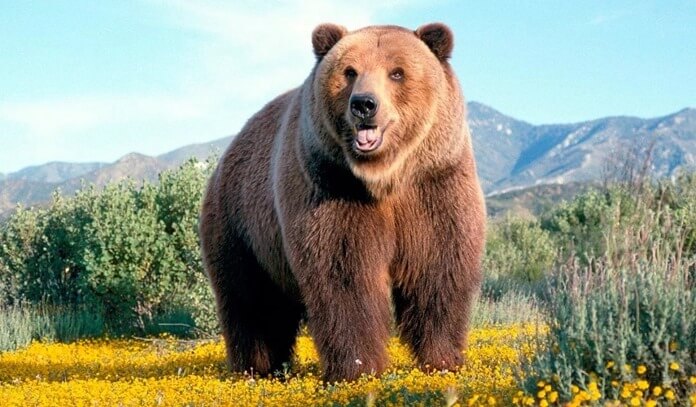 Weight - up to 410 kg, length - up to 2.4 meters.
Weight - up to 410 kg, length - up to 2.4 meters.
Brown bears are very unusual animals. They can stand on two legs, pick things up with their "fingers" and often eat what we eat. This - combined with their ability to communicate with each other through scratches on trees, smells and sounds - lends a likeness to our own way of life.
Brown bears can be found in Western and Central Europe, Scandinavia, Finland and the Carpathians. In Russia, brown bears live in almost the entire forest zone with the exception of the southern regions.
This bear was the inspiration for the names of two constellations, Ursa Major and Ursa Minor.
3. Grizzly bear
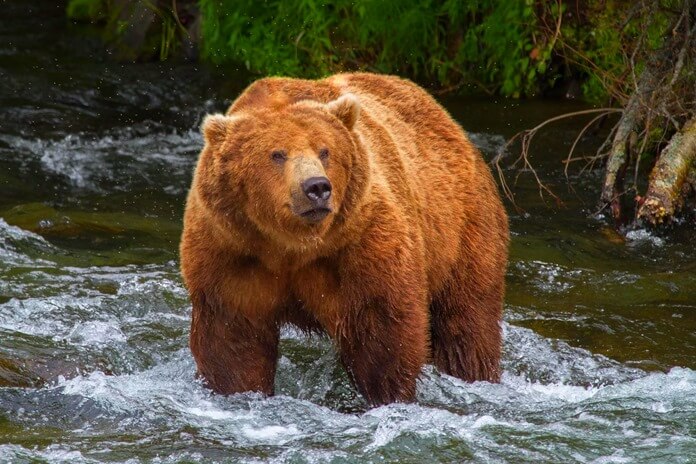 Weight - up to 726 kg, length - up to 4 meters.
Weight - up to 726 kg, length - up to 4 meters.
Grizzly bears, scientifically named Ursus arctos horribilis (terrible brown bear), have a rather prominent hump in the shoulder blades and long claws (up to 80 mm). Both hump and claws are characteristics associated with the fact that the grizzly bear is good at digging.
Grizzly bears are omnivores and their diet can vary widely. They feed on seeds, berries, roots, grasses, mushrooms, fish, deer, elk, dead animals and insects. Often, grizzlies attack people who were so careless that they came too close to the bear. In 1998, a huge man-eating bear was killed in Alaska. The dimensions of his body were such that, standing on his hind legs, he could look into the second floor window of a typical five-story building.
In late summer and early fall, grizzlies enter the hyperphagia stage, lasting 2 to 4 months. Simply put, they increase their calorie intake to put on weight for hibernation. During this time, they can add up to 6 kg per day to their already impressive carcass.
2. Kodiak
 Weight - up to 780 kg, length - up to 2.9 meters.
Weight - up to 780 kg, length - up to 2.9 meters.
This furry giant lives on Kodiak Island in Alaska, hence its name. He is the largest brown bear in the world.
The most famous bear in films was also a Kodiak. He has starred in such famous films as "The Bear", "Legends of Autumn" and "On the Edge". In total, Bart had 16 films in his piggy bank.
1. White Polar Bear
 Weight - up to a ton, length - up to 3 meters.
Weight - up to a ton, length - up to 3 meters.
When asked which bear is the biggest, the Guinness Book of World Records names the polar bear. Although in a race of sizes, a Kodiak bear breathes in the back of a white's head.
These beautiful, exotic creatures live in northern Canada, Alaska, Greenland, Norway and Russia.
The largest bear in the world shares a common ancestor with brown bears. Therefore, crossing of white and brown bears is not only possible, but also occurs regularly. Because of this, from 2% to 10% of the genetic material of polar bears is found in the population of brown bears. Hybrids of white and brown bears are called polar grizzlies.
However, brown bears are uncomfortable in the conditions in which polar bears feel at ease. And vice versa.
It is curious that in hot climates the luxurious white fur of a polar bear can turn green. This is due to the fact that microscopic algae grow in the hairs.
The largest bear in history - Arctodus simus
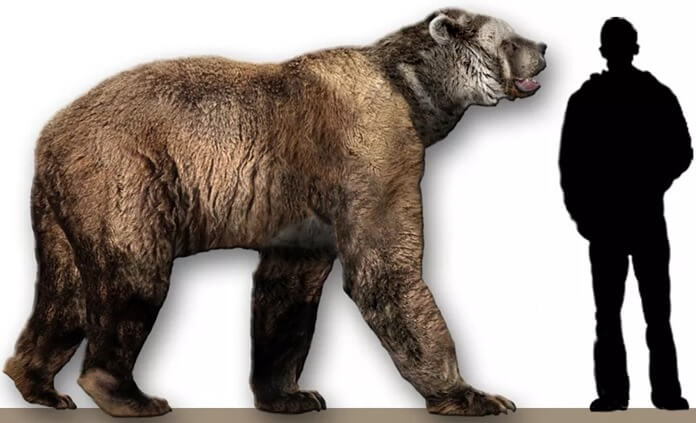 Weight - more than 1100 kg, length - up to 3.5 meters.
Weight - more than 1100 kg, length - up to 3.5 meters.
An extinct species of the Giant Short-faced Bear (Arctodus simus), it is the largest bear in Earth's history. He lived about 12,000 years ago. The giant's habitat was the territory of North America.

